Feature image courtesy of Clive Hanley
Over the past 4 years we have been steadily increase our van train. We have a number of possible opportunities to reach our target of 20. Although the overall plan is a fixed rake of 17 with 3 spare to operate within the Mixed freight or to bolster the main rake during charters. The total is currently 15 so we are 5 short. Although this can be fuddled with the use of the Fish Van and Container carrying vehicles. The past 2 years have seen us refresh a number of other “mixed” vehicles but the latest focus has been the tanks.
The plans for a tank train first saw its inception with the Swithland wagon group who made a great effort with our first 2 contenders. Privately owned 6071, built by Charles Roberts in 1949 for Shell Mex & BP Ltd to transport fuel oil and later used by BR as a Departmental tank, as well as our very own 6581 another Shell Mex & BP Ltd tank although built by Fairfield Bridge & Engineering in 1948 and used for Lubricating Oil and again latterly used as a Departmental tank, both saw there first outing in 2018.

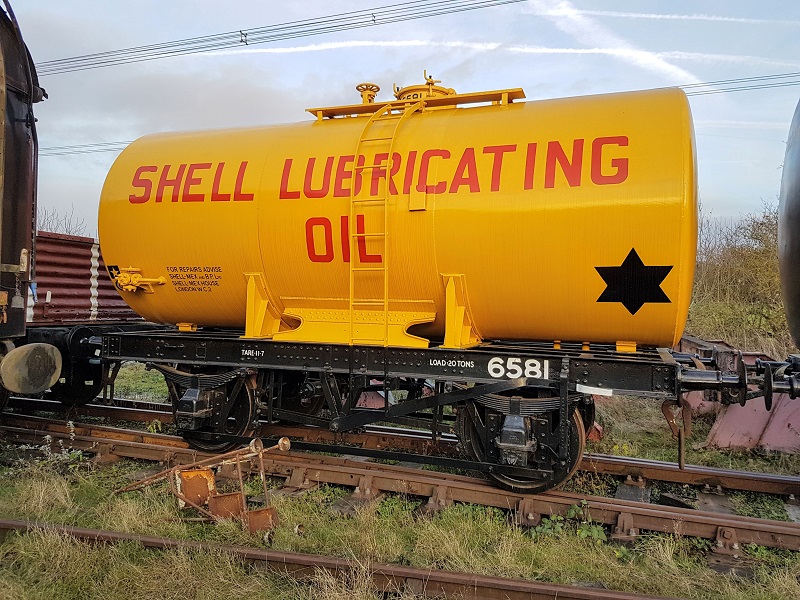
Next to see the light of day was 4513 another Shell Mex & BP Ltd tank used for Petroleum spirit built by Hurst Nelson in 1941, this came in to our care towards the end of 2019 and received a top half refresh last year, sparking our current desires to progress with a tank wagon train.
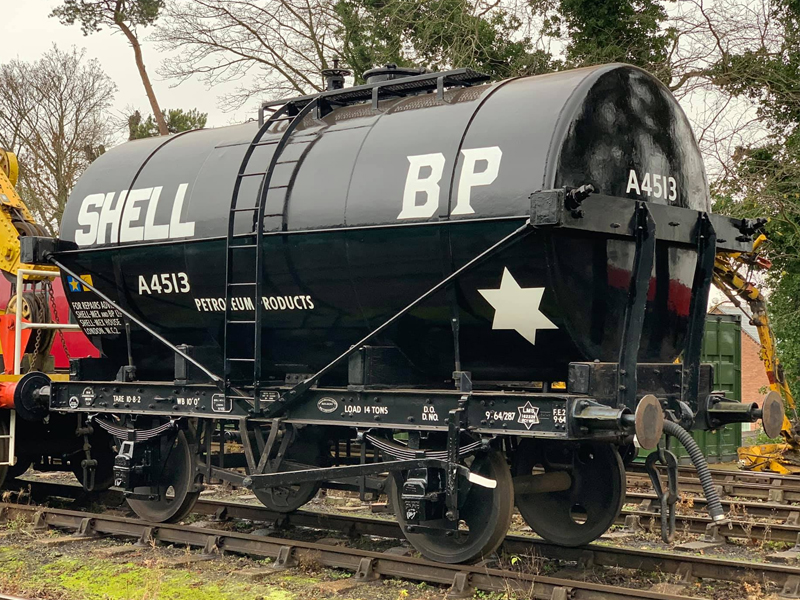
Our next vehicle has been the focus of a number of our recent updates but we shall take this opportunity to discuss in a little more depth its unique suspension, that is unique to the GCR, quit common on the national network.
So 1408 a China Clay Slurry tank built by Charles Roberts in 1965 had a fair amount of attention which included lifting the vehicle for suspension inspection.

If the damping in the suspension of a wagon were to be too low this could cause the vehicle to bounce uncontrollably leading to a derailment; likewise, if the damping level is too high then the suspension will not move freely enough to accommodate any undulations or twists in the track which again could also lead to a derailment, particularly at low speeds.
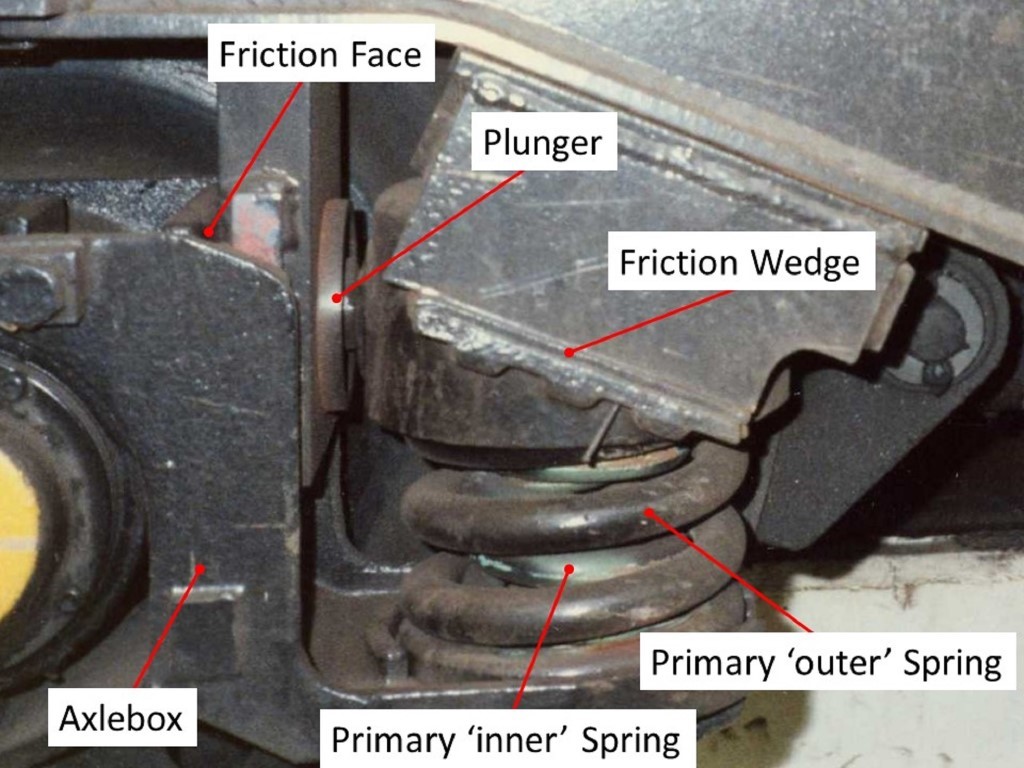
When 1408 was new the Gloucester pedestal suspension design would have been tested to ensure the level of spring stiffness and damping present would be suitable to allow the wagon to accommodate undulations or track twists. The test called a torsional stiffness test (or Delta Q/Q) was carried out on a calibrated weighbridge, where the wagon is subjected to a defined twist whilst measuring each individual wheel load. The amount of load on each wheel must remain within 60% of the average wheel load to pass the test.
The first graph below shows the test results from a torsional stiffness test where the wheel load remains within the limit when the wagon is twisted to 1 in 150. The thickness of the band of results for each wheel gives an indication of the level of friction damping in the suspension.
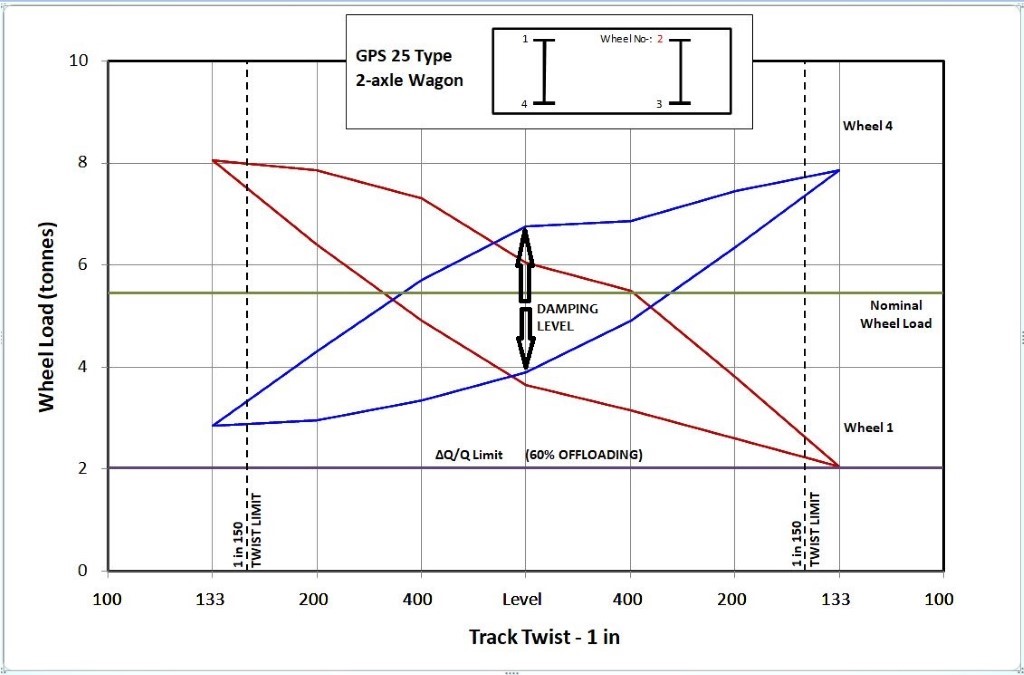
Whereas this second graph shows that the wheel load on wheel 2 drops below the 60% offloading limit; in this case the combination of the stiffness in the suspension or the wagon underframe and the level of friction damping is too great therefore a change to the design would have been necessary.
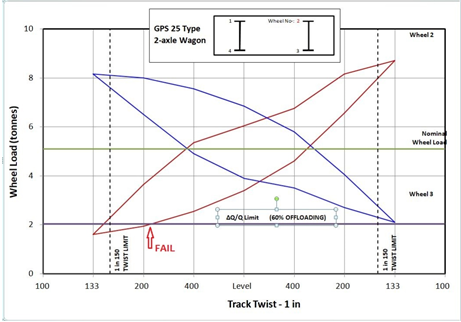
Once a wagon has passed its test then a maintenance plan must be implemented in order to maintain its compliance. In the case of 1408, we must ensure that the friction dampers continue to operate as they did when the suspension type was initially tested, therefore we undertook checks of the condition of the friction surfaces on the axlebox and plunger, and ensuring the freedom of operation of the friction wedge and plunger.
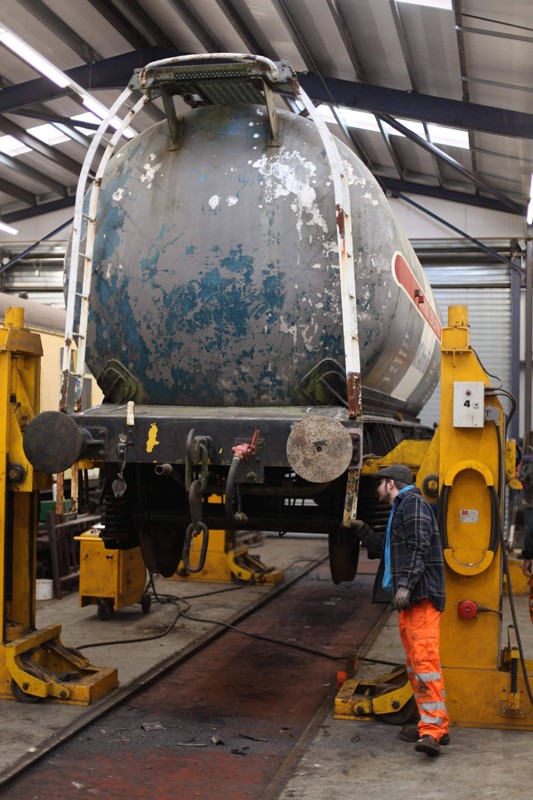
In order to do this we lifted the wagon using the vehicle lifting jacks at Rothley until all the weight was released from the suspension and the condition of the friction surfaces could be checked. Whilst the wagon was lifted we could also check the springs for any fractures.
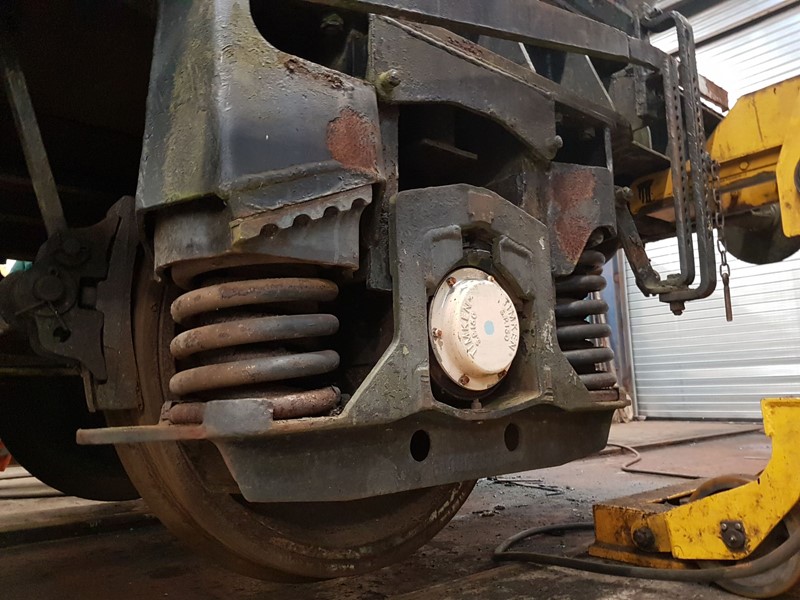
When lowering the wagon back onto its wheelsets the operation of each friction wedge and plunger was noted, the lift and lower process was repeated a few times to check there was no sticking of the components.
After lowering the wagon back onto its wheelsets a check of the buffer heights was made to ensure it had lowered fully and evenly, then the wagon was shunted around the yard a few times to settle the suspension before the buffer heights were checked again and confirmed to be within tolerance.
Our checks on 1408 confirmed all was in order and that the suspension is operating as it should, therefore ensuring wheel unloading is maintained within the limit levels.
The diagrams and reference material are taken from Dave Bower’s book Rail Vehicle Testing
As the second update of this year confirms our focus is now on 3436 a 22T B Type Esso tank built by Charles Roberts in 1958. This will be returning to its as built Esso condition and the templates are already ready. We are just waiting for the opportunity to return and complete it.
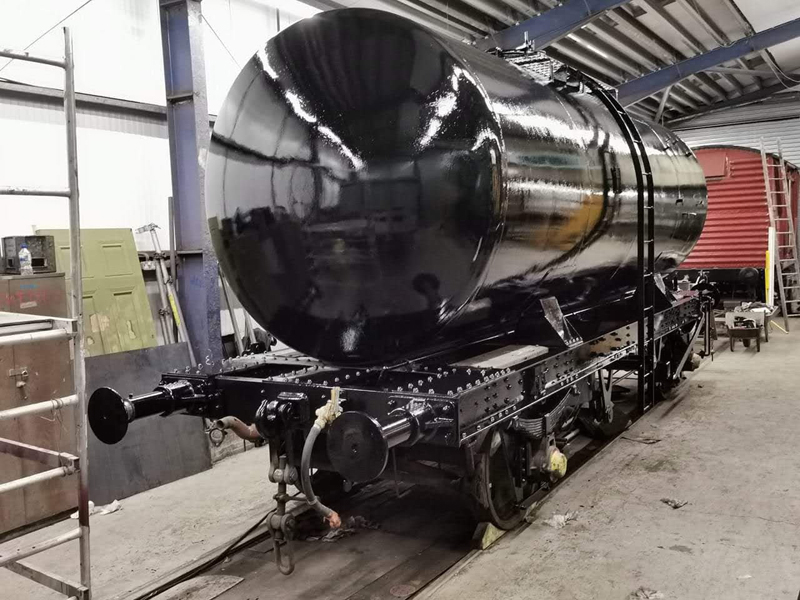
Following 3436 will be DB998926, this is a BR 14T departmental creosote tank built by Charles Roberts in 1959. This 3rd lockdown has already been a help, as my research has successfully identified its original region and depot allocation. This being the North Eastern regions West Hartlepool Sleeper Depot. This tank will receive its full departmental livery of Black with straw lettering including this original allocation.

That gives us a possible train made up of 6 tanks, but wait there is one more. Located at the Mountsorrel Heritage Centre is Tar Tank 339, a National Coal Board tank built by the Cambrian Wagon Works in 1940. With the permission of the centre I’m sure this vehicle could run with the 6 to create a train of 7 vehicles.
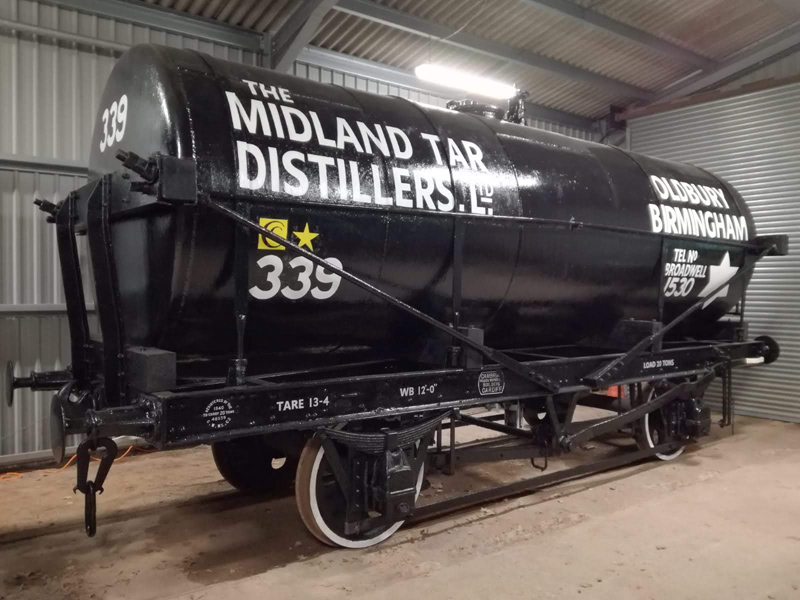
Unfortunately that is as far as we can go but who knows what the future could bring. There is however, Covid not withstanding, the opportunity to see these tanks together. This has been organised by Timeline events and will be hauled by Standard Class 5 Locomotive 73156. Currently set to be Monday 19th April and Tuesday 20th April, the links will take you to further information, of course this may be subject to change.

Image courtesy of Clive Hanley
So hopefully that gives a little insight to our current focus and aims. Next week we have yet to decide but it will likely be the continuation of our vehicle profile series started during the first lockdown.



Look forward to a ‘tanker only’ rake running the length.
LikeLike
Matt wonderful use of language ‘Fuddled’ smashing. I do believe that 2021 will be Wagon and Wagon’s best ever year keep up the good work. Hopefully when I am fully recovered I shall be merrily scraping away again. Kindest regards Eddie!
LikeLike
Matt I was looking at the list of work done for 2020, but what about the box’s for the Box Wagons?
LikeLike
No one reminded me.
LikeLike